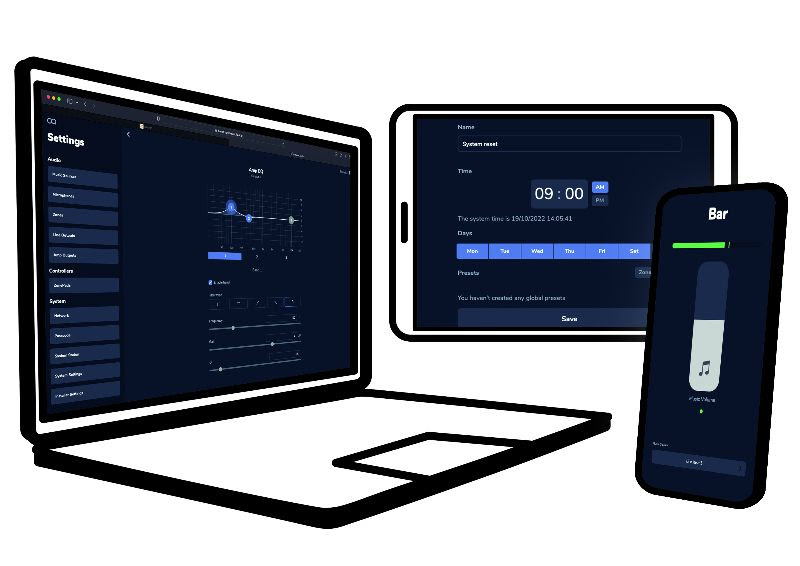Optimal Audio announced that it has released the latest update to its WebApp and Zone firmware — Version 1.0 — offering enhanced flexibility and features to simplify and operate its commercial audio ecosystem. It’s available for download from the company website.
Zone is a series of zonal audio controllers with DSP and configuration via WebApp, with four or eight zones offered in powered and non-powered versions. WebApp brings the technology behind the Zone controller series to the end-user.
With new Version 1.0, installers can now hide unused zones to create a cleaner interface, as well as having the ability within each zone settings page to hide sources from the selection list and the microphone volume controls. This can mean presenting the end-user with just the zone name and volume control.
In addition to the existing three-band EQ that works with the loudspeaker tuning presets, an extra three-band User EQ is now available to the installer on every output, all eight line outputs and eight amp outputs. Pairs of outputs now also independently support a bridge mode both for low impedance and for driving 70-volt high-impedance loudspeakers, and presets also now include Sub 10 and Sub 15 tunings.
A clearer display for the fixed analog EQ band has been added to all microphone EQs. To assist navigation and triggering of presets, the launch icon is now labeled. The preset list view can be re-ordered in Edit mode and helps to create a straightforward list of the available presets. The installer page also has a new metering view that includes all the meters in the DSP for viewing system signal flow in one place.
Finally, Open Sound Control over Ethernet is the Zone control method from third-party controllers. In previous versions, only UDP message control of Routines was available, but V1.0 adds support for UDP and TCP control of Zone parameters. Included in the release are a collection of example design files for TouchOSC to demonstrate use of OSC control. These give examples of every parameter, status and name to be the basis of control panels tailored to the specific application.
“WebApp is our ‘secret sauce’ to the success of Optimal Audio’s ecosystem, and with this latest release we have extended the possibilities for the system integrator while improving the simplicity that can be presented to the end-user,” says Matt Rowe, head of engineering. Go here for more specifics.















